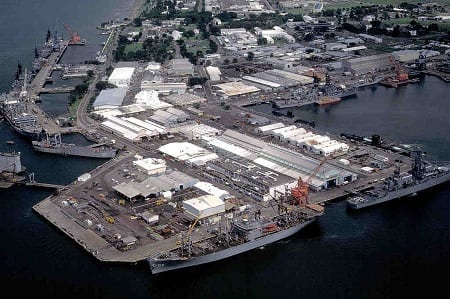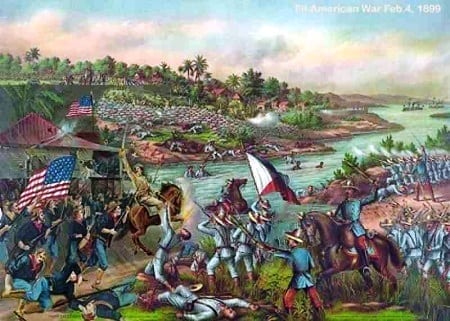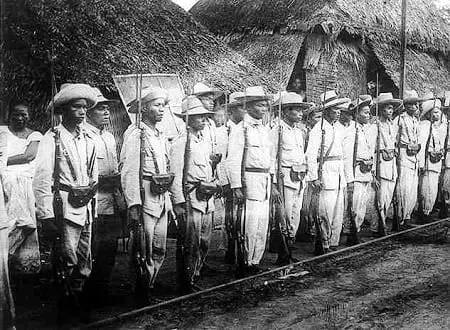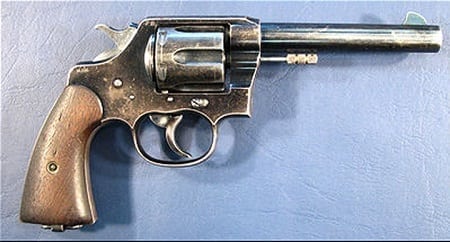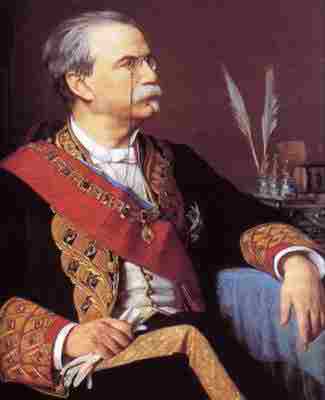8 Famous Filipino Events You Didn’t Know Influenced The World
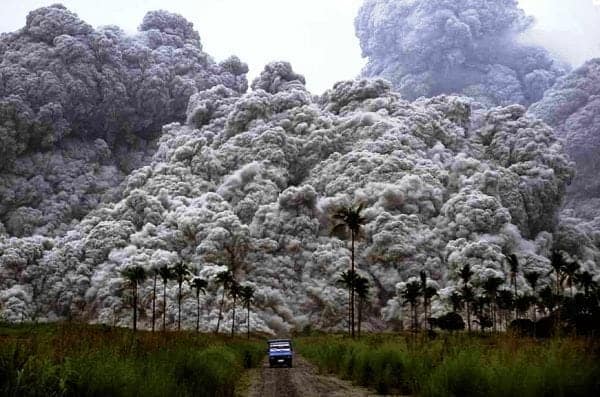
Mankind’s history can be likened to a pond, wherein one event—even if it is a tiny ripple—has the potential to make itself felt in a wide area. That’s just how history works—events influencing other events.
As for the Philippines, it may come as a surprise to some how a geographically small country could influence events on a global scale. However, the reality is that the Philippines has had its fair share of events significant enough to influence the world in a big way.
Also Read: 10 ‘What If’ Scenarios That Would Have Changed Philippine History Forever
1. The Philippine Senate’s Rejection Of The US Bases Emboldened China
In retrospect, a lone vote did end up influencing China’s naval incursions in the disputed islands of the West Philippine Sea—and by that we meant the Philippine Senate’s 12-11 rejection against the treaty that would have extended the lease of the naval base in Subic to the US.
The closure of the largest US military base outside of the US and the departure of its Navy had a direct profound effect on China. In the absence of a counter-weight and because its naval forces began favoring the doctrine of “near-seas” rather than “near-coast” defense in the 1980s, China became bolder in the open seas.
Recommended Article: 15 Most Intense Archaeological Discoveries in Philippine History
It was only a matter of time then that the Chinese would slowly but surely mark the disputed islands as their own territory, beginning with Mischief Reef which they seized from the Philippines in 1995—an annexation many analysts agreed would have been impossible with the presence of the US Navy in Subic.
2. The Philippine-American War Helped Stifle American Imperialism
While counter-intuitive at first, the Philippine-American War which ended in American victory really did dissuade the Americans from expanding further across Asia.
The general bloodiness of the war (the US suffered fewer casualties when it fought against Spain) and the economic costs had left the Americans exhausted. Imperialist designs effectively waned after the war, with even its most ardent of supporters admitting the US was not cut out for colony-building.
Also Read: 8 Dark Chapters of Filipino-American History We Rarely Talk About
Where many once viewed the Philippines as a vital outpost to the rest of Asia’s riches, it was now seen as a huge liability. For one, US President Theodore Roosevelt—a big supporter of imperialism—admitted in 1906 that the Philippines had become America’s Achilles’ heel especially in the light of growing Japanese aggression. Such thinking inevitably contributed to the US’ isolationist policy in the 1930’s and its seeming half-hearted defense build-up of the country prior to World War II.
3. The Philippine Revolution Influenced Nationalist Movements Of Other Asian Countries
As the first truly national fight for freedom against a foreign power, the Philippine Revolution did much to influence the nationalist movements of other Asian countries especially those of China, Indonesia and Malaysia.
Chinese nationalist leader Sun Yat-sen saw the significance of the Filipino struggle and sought to support the revolutionaries with weapons when he was still exiled in Japan and became acquainted with Mariano Ponce. He believed that by supporting them in their victory, the Filipinos would also support the Chinese nationalists’ fight against the hated Manchus.
READ: 11 Things From Philippine History Everyone Pictures Incorrectly
In Indonesia and Malaysia, both Rizal and Bonifacio were hailed as brilliant nationalists. Tan Malaka, a national hero of Indonesia, cited Bonifacio as one of Asia’s first heroes to have come from the proletariat. Rizal, on the other hand, have been frequently mentioned and praised by Indonesian and Malaysian leaders such as Anwar Ibrahim and Sukarno.
4. The Fall Of The Philippines In World War II Saved The Rest Of Asia And Australia
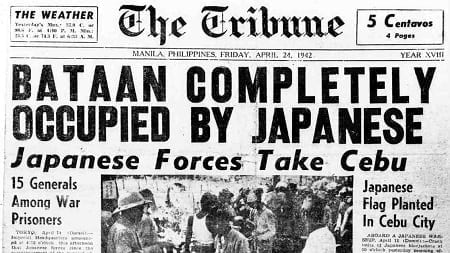
Although the surrender of the Filipino-American forces to the Japanese in Bataan meant subjugation for the Filipinos for three long years, the “defeat” did have an important effect: it delayed Japan’s timetable for conquest and ultimately saved Australia.
While they had a relatively easy time conquering other places such as Singapore and Hong Kong, the Japanese—by a combination of hubris and underestimation—found themselves bogged down for six months in the Philippines against the stubborn defense put up by the USAFFE forces especially in Bataan. In fact, Masaharu Homma estimated that the Japanese would only need 50 days to conquer the entire archipelago; in Bataan alone, they fought against the defenders for three months.
READ: 10 Biggest Misconceptions About World War II In The Philippines
Ultimately, the valiant last stand of the Filipinos and Americans cost the Japanese dearly in terms of time, resources and manpower, allowing Australia and the US time to build up their own forces. British Prime Minister Winston Churchill would even laud the defenders in the Philippines for essentially stopping the erstwhile fast-conquering Japanese war machine.
5. The EDSA Revolution Paved The Way For Other Nonviolent Revolutions
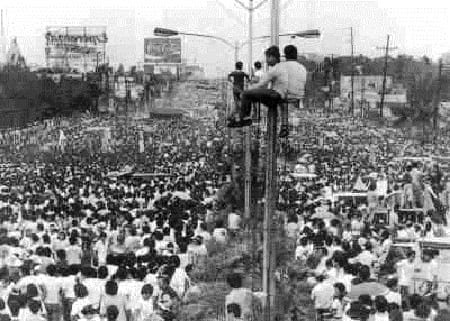
Aside from ousting the Marcos dictatorship, one great impact of the first EDSA Revolution was the impression it left on other countries reeling under authoritarian rule at the time. More explicitly, the general peacefulness which accompanied the ouster of an unpopular regime shocked the rest of the world accustomed to associating regime changes with violent revolutions. In the end, the successful non-violent “Yellow Revolution” sparked off other incidents of peaceful (and not-so-peaceful) revolutions across the world.
Also Read: 9 Things You May Not Know About Corazon Aquino
European countries under Communist rule such as Poland, Czechoslovakia and the Baltic states launched their own uprisings. In the neighboring Asian countries of Taiwan and South Korea, popular protests led to greater democratic reforms. In Latin America, regimes belonging to such dictators as Augusto Pinochet crumbled. In South Africa, Nelson Mandela and his associates fought to end apartheid. Basically, the EDSA Revolution turned out to be the starting point of revolutions across the world in the 80’s and 90’s.
6. The Moro Rebellion Led To The Development Of The .45 ACP Handgun
Contrary to popular belief, the Colt M1911 .45 caliber semi-automatic pistol was not used during the Moro Rebellion—it was merely developed afterwards.
Nonetheless, for the US military to develop a sidearm which would later become standard issue stands as a testament to the fighting prowess of the Moro. Specifically, US servicemen fighting in the Moro Rebellion were shocked that their .38 revolvers and even Krag rifles could not stop a rampaging juramentado dead in his tracks, allowing the latter to charge in and swing away at the hapless Americans with his knife.
Recommended Article: 9 Pinoy Historical Villains Who Weren’t As Evil As You Think
To counter the near-invulnerability of a Moro gone amok, the US Army had to issue .45 caliber revolvers and Winchester pump-action shotguns to its servicemen and their Filipino counterparts. Sure enough, the larger caliber proved effective in stopping a charging juramentado.
The Colt .45 pistol, although chosen to be the official sidearm for US forces, would not be produced until 1912 and issued to military personnel until mid-1913—at which point the Moro Rebellion had drawn to a close.
7. Rizal’s execution killed the Spanish Prime Minister
Aside from helping to ignite the Philippine Revolution, Jose Rizal’s execution also played a role in the death of the Spanish Prime Minister.
Also Read: 25 Amazing Facts You Probably Didn’t Know About Jose Rizal
On August 8, 1897, an Italian anarchist named Michele Angine Golli shot at point-blank range Spanish Premier Antonio Canovas del Castillo outside a spa. After being interrogated, Golli said he killed Canovas to avenge his fellow anarchists who had been imprisoned and executed in the castle of Montjuich, Barcelona. He also dedicated his act as retribution for the death of “Don Jose Rizal” and expressed regret for his failure to kill Camilo de Polavieja, the Spanish Governor General under whom Rizal was executed.
As to how Rizal became involved with the anarchists, he may have formed a connection with them during his brief imprisonment at the very same castle.
8. The Eruption Of Mt. Pinatubo Changed The Earth’s Climate
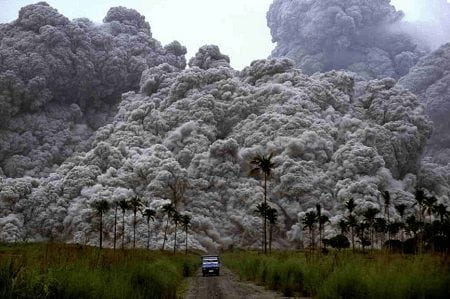
Considering it was the second largest volcanic eruption in the 20th century (only the 1912 eruption of Novarupta in the Alaskan peninsula was bigger), the after-effects of Mt. Pinatubo were felt world-wide. Particularly, the huge amount of aerosols (the most since Krakatoa in 1883) it released into the earth’s stratosphere affected the world’s climate in a number of ways.
Also Read: Mt.Pinatubo’s Eruption Aftermath, As Seen From Space
Ozone levels decreased substantially due to the 20 million tons of sulphur dioxide Mt. Pinatubo spewed out. Sunrises and sunsets became brighter due to the fine ash and gases in the air. More significantly, temperature levels around the world dropped at an average of 1.5 degree Celsius between 1992 and 1993 due to the increased amount of sunlight which was reflected back to space by the sulfur dioxide in the atmosphere.
References
Bowen, J. The Battle of the Philippines – Strategic Overview. The Pacific War. Retrieved 17 April 2015, from http://goo.gl/HoC8Kc
Carillo, J. (2011). Rizal’s impact on Southeast Asia described in new book. GMA News Online. Retrieved 16 April 2015, from http://goo.gl/2xSRzl
Fulton, R. (2007). The Legend of the Colt .45 Caliber Semi-Automatic Pistol and the Moros. Moro Land History. Retrieved 17 April 2015, from http://goo.gl/Js7hY6
Lim, R. (1969). Growing Sino-Japanese Tensions and the Risk to East Asian Security. China Brief,5(16).
Pappas, S. (2011). Pinatubo: Why the Biggest Volcanic Eruption Wasn’t the Deadliest. Live Science. Retrieved 17 April 2015, from http://goo.gl/zABNTn
Tan, A. The Chinese in the Philippines and the Chinese Revolution of 1911. In Asian Studies (1st ed.). Retrieved from http://goo.gl/YRGm9m
The Kahimyang Project,. (2014). Today in Philippine history, August 8, 1897, the Spanish Premier was assasinated to avenge execution of Rizal. Retrieved 17 April 2015, from http://goo.gl/9iaZ8p
Tiglao, R. (2014). Did EDSA 1986 matter?. The Manila Times. Retrieved 17 April 2015, from http://goo.gl/WubXsb
Additional Sources:
International Human Rights: A Comprehensive Introduction by Michael Haas
Chasing Ghosts: Unconventional Warfare in American History by John Joseph Tierney
The Moro War: How America Battled a Muslim Insurgency in the Philippine Jungle, 1902 – 1913 by James R. Arnold
Revolutionary Spirit: Jose Rizal in Southeast Asia by John Nery
Brown American by Veronico ”Ron” Somera
Sands of Empire: Missionary Zeal, American Foreign Policy, and the Hazards of Global Ambition by Robert W. Merry
The American Way of War: A History of United States Military Strategy and Policy by Russell Frank Weigley
The Geopolitics of East Asia by Robyn Lim
FilipiKnow
FilipiKnow strives to ensure each article published on this website is as accurate and reliable as possible. We invite you, our reader, to take part in our mission to provide free, high-quality information for every Juan. If you think this article needs improvement, or if you have suggestions on how we can better achieve our goals, let us know by sending a message to admin at filipiknow dot net
Copyright Notice
All materials contained on this site are protected by the Republic of the Philippines copyright law and may not be reproduced, distributed, transmitted, displayed, published, or broadcast without the prior written permission of filipiknow.net or in the case of third party materials, the owner of that content. You may not alter or remove any trademark, copyright, or other notice from copies of the content. Be warned that we have already reported and helped terminate several websites and YouTube channels for blatantly stealing our content. If you wish to use filipiknow.net content for commercial purposes, such as for content syndication, etc., please contact us at legal(at)filipiknow(dot)net
